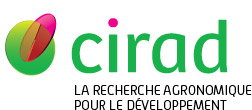Maeno Koutaro Ould, Piou Cyril, Leménager Nicolas, Ould Ely Sidi, Ould Babah Ebbe Mohamed Abdallahi, Benahi Ahmed Salem, Jaavar Mohamed el Hacen. 2025. Desiccated desert locust embryos reserve yolk as a “lunch box” for posthatching survival. PNAS Nexus, 4 (5):pgaf132, 11 p.

|
Version publiée
- Anglais
Sous licence  . .
PUB766.pdf Télécharger (992kB) | Prévisualisation |
Url - jeu de données - Entrepôt autre : https://figshare.com/s/2d65f58fc19199f04f14
Résumé : Oviparous animals often prioritize the allocation of reproductive resources to egg size over clutch size, but the impact of this maternal investment on the allocation of embryonic yolks and its ecological functions is poorly understood. We investigated how desert locust embryos allocate yolk for survival energy after hatching, rather than embryonic somatic growth depending on egg size in response to desiccation stress. Crowd-reared females (gregarious phase) produced significantly larger progeny with higher tolerance to starvation than females reared in isolation (solitarious phase). Abnormally small hatchlings with residual yolk in their gut emerged from small and large eggs when exposed to desiccation. In particular, these small hatchlings of desiccated eggs survived significantly longer under starvation than those of wet ones, with larger eggs providing even greater survival benefits. Physiological analysis showed that hatchlings from desiccated eggs showed a trade-off by reserving more lipids without somatic growth than those from normal eggs. Desiccation could be a reliable signal for embryos to predict future poor vegetation, and reserved energy could increase the chance of accessing food after hatching. Our results underscore adaptive plasticity in maternal and embryonic resource allocation in desert locusts in response to unpredictably variable semi-arid habitats.
Mots-clés Agrovoc : écologie animale, Schistocerca gregaria, phénotype, comportement animal, stress, jaune d'oeuf, couvée, embryon somatique
Mots-clés géographiques Agrovoc : Mauritanie, France, Afrique
Mots-clés libres : Adaptive strategy, Desiccation, Embryo, Maternal effects, Resource allocation
Agences de financement hors UE : Japan Society for the Promotion of Science
Projets sur financement : (JAP) KAKENHI
Auteurs et affiliations
- Maeno Koutaro Ould, JIRCAS (JPN) - auteur correspondant
-
Piou Cyril, CIRAD-BIOS-UMR CBGP (FRA)
 ORCID: 0000-0002-9378-9404
ORCID: 0000-0002-9378-9404
- Leménager Nicolas, CIRAD-BIOS-UMR CBGP (FRA)
- Ould Ely Sidi, CNLA (MRT)
- Ould Babah Ebbe Mohamed Abdallahi, CNLA (MRT)
- Benahi Ahmed Salem, CNLA (MRT)
- Jaavar Mohamed el Hacen, CNLA (MRT)
Source : Cirad-Agritrop (https://agritrop.cirad.fr/613472/)
[ Page générée et mise en cache le 2025-09-30 ]




